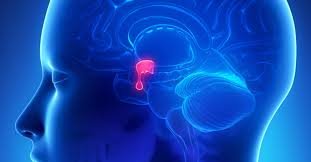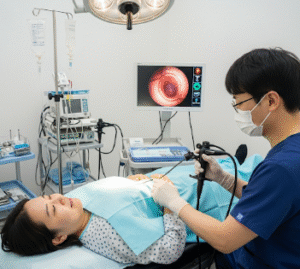Overview
Carcinoid syndrome is a group of symptoms caused by hormone-secreting carcinoid tumors, a type of neuroendocrine tumor (NET). These tumors release serotonin and other chemicals into the bloodstream, leading to flushing, diarrhea, and other systemic symptoms. In Korea, advanced diagnostic imaging and targeted therapies have made it possible to detect carcinoid syndrome earlier and manage it more effectively, improving patient outcomes.
What is Carcinoid Syndrome?
Carcinoid syndrome occurs when carcinoid tumors—usually found in the digestive tract, lungs, or other organs—secrete hormones directly into the bloodstream. Normally, these chemicals are broken down in the liver, but when tumors spread (especially to the liver), the liver cannot filter them completely, causing systemic symptoms.
Symptoms
- Flushing of the face and neck
- Persistent diarrhea
- Abdominal pain and cramping
- Wheezing, asthma-like symptoms
- Fatigue
- Rapid heartbeat (palpitations)
- Carcinoid heart disease (valve problems in the heart)
- Skin lesions (telangiectasia)
Causes
- Overproduction of serotonin, histamine, and other vasoactive substances by carcinoid tumors
- Tumor metastasis, especially to the liver, allowing hormones to bypass liver metabolism and enter the bloodstream
- Rarely, tumors in the lungs or ovaries that directly release hormones into circulation
Risk Factors
- Having a carcinoid tumor (digestive tract, lungs, pancreas, etc.)
- Family history of neuroendocrine tumors
- Genetic syndromes (Multiple Endocrine Neoplasia type 1, MEN1)
- Older age (typically diagnosed between 50–70 years)
Complications
- Carcinoid crisis: A life-threatening condition with sudden blood pressure drop, severe flushing, and bronchospasm
- Carcinoid heart disease: Thickening and malfunction of heart valves due to long-term hormone exposure
- Nutrient malabsorption leading to weight loss and vitamin deficiencies
- Liver metastasis worsening hormone-related symptoms
Prevention
There is no guaranteed prevention, but risks may be reduced by:
- Early detection of carcinoid tumors through health screenings
- Genetic counseling and testing for those with a family history of MEN1
- Regular monitoring for patients already diagnosed with carcinoid tumors
Treatment Options in Korea
Korea offers advanced facilities for diagnosing and treating carcinoid syndrome, often involving a multidisciplinary team (oncology, endocrinology, gastroenterology, and cardiology).
Diagnosis
- Blood tests (serotonin, chromogranin A)
- 24-hour urine test for 5-HIAA (serotonin breakdown product)
- Imaging: CT, MRI, PET-CT, somatostatin receptor imaging
- Echocardiogram to check for carcinoid heart disease
Treatment Approaches
- Somatostatin analogs (octreotide, lanreotide): Control hormone secretion and reduce flushing/diarrhea
- Surgical removal of tumors, if localized
- Peptide Receptor Radionuclide Therapy (PRRT): Radioactive drugs targeting tumor cells, available in advanced Korean hospitals
- Targeted therapy (everolimus) for advanced cases
- Chemotherapy for aggressive or metastatic disease
- Liver-directed therapy (embolization, ablation) if tumors spread to the liver
- Cardiac management for carcinoid heart disease with medications or valve surgery













